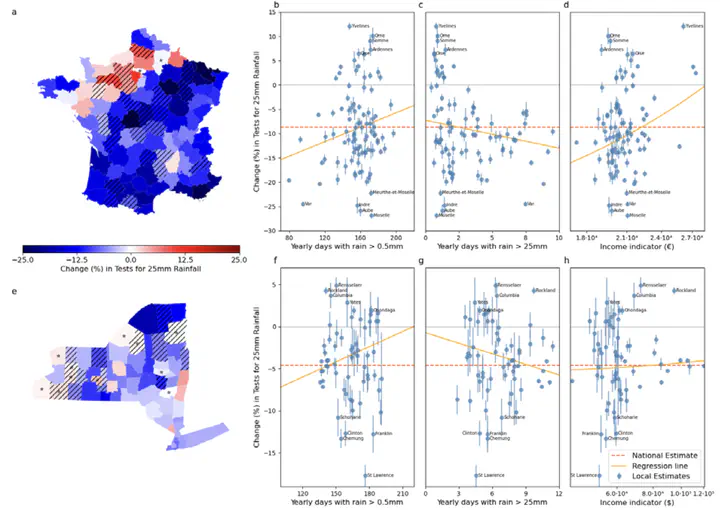Evidence of rainfall-driven disruptions in respiratory epidemics surveillance

Abstract
Extreme weather events can disrupt human behavior and access to health services, possibly affecting the surveillance of respiratory epidemics. Rainfall, in particular, can reduce the uptake of diagnostic testing, delay the detection of infections, and amplify the disadvantages faced by vulnerable populations. We examined this effect using the COVID-19 pandemic as a case study, analyzing daily testing activity in mainland France and New York State between May 15, 2020, and November 1, 2021. COVID-19 testing data were combined with daily rainfall and local socioeconomic indicators. Epidemic trends and weekly seasonality were extracted using time series modeling and incorporated into Poisson regression models to quantify the impact of rainfall on testing rates and to explore its variation with local rainfall profiles and income levels. Rainfall was consistently associated with reduced testing in both France and New York State. Nationally, 25 millimeters of rainfall in one day were linked to an 8-to-9 percent reduction in testing in France and around a 5 percent reduction in New York State. Spatial patterns revealed that decreases were more pronounced in poorer areas, while locations accustomed to frequent light rainfall showed weaker effects. These findings, across diverse geographies and climates, show that rainfall can hinder respiratory epidemic surveillance by reducing testing, and compounds socioeconomic and climatic vulnerabilities. Recognizing and mitigating weather-driven disruptions is essential to strengthen epidemic surveillance and maintain timely detection under a changing climate.